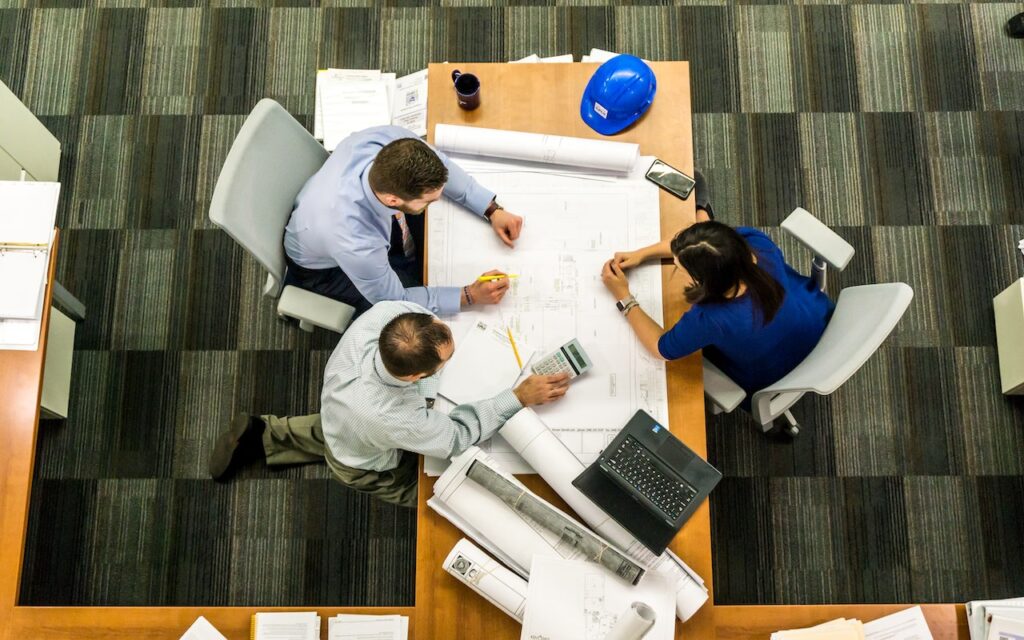Technology is a valuable tool in any organization, but the construction industry is likely to see continued enhancement and improvements in efficiency, safety, and overall satisfaction by end users as new strategies and tools become available. In construction management, technology can be a tool that helps lower costs and improve outcomes in several key ways.
Use of Building Information Modeling
Building Information Modeling (BIM) is perhaps one of the most important technology transformations in construction management. It is an intelligent 3D modeling tool that creates an accessible, easy-to-evaluate digital representation of a build from both a physical and a functional aspect. Using this digital tool, it is possible to create and manage valuable and complex data more efficiently, applying that information to the design process, construction engineering, and the overall operations process, with the goal of improving efficiency and project outcomes. More so, it allows for collaboration in real time with all stakeholders.
Automation and Robotics in Construction Processes
Automation is, at its core, one of the most valuable tools in construction management because it ensures efficiency in operations. It mitigates the risk of human error while also introducing the opportunity to use human intelligence to tackle more important and creative tasks while letting the digital tools handle the repetitive processes.
Robotics allows for another layer of adaptivity. With it, companies can take on more challenging and precisely designed and built projects to create a more effective and well-designed finished product. More so, used along with BIM, construction robotics allows companies to create very specific and very detailed finished projects that can provide better results, including in the areas of:
- Improving the efficiency of operations
- Boosting safety by minimizing a wide range of risks to people
- Offering better precision in the design and build process
- Reducing overall costs by removing the human factor
- Handling projects at a faster rate
Both automation and robotics will continue to advance and play a role in every facet of construction management, moving forward in new ways.
Enhanced Project Scheduling and Tracking
Technology is the workhorse here. It creates opportunities for companies to tackle a wide range of projects with better results. A component of that is by providing better project scheduling and tracking of projects. Coupled with automation, technology can be used to create more detailed and accurate scheduling of every component of the project, including planning, material procurement, and field communications.
For example, with a centralized and real-time scheduling process that is collaborative, each sector of the company or within a project can see what is happening with a project. This can help to improve efficiencies in the backend as well, including:
- Improving communications
- Reducing billing delays
- Ensuring invoices are maintained
- Managing change orders efficiently
- Meeting documentation control
- Improving job costing accuracy
- Improving time tracking for projects
In each of these areas, companies are able to see significant improvement in the way they operate and how they manage not just the work on the physical project but also the financials in the background.
Improved Safety Measures Through IoT Devices
Another way technology is integrating into the construction industry to drive improvement is with the use of Internet of Things (IoT) devices. These tools work like a second set of eyes, constantly providing insight and control over operations so that safety measures can be met and mastered. IoT-enhanced technological solutions can work to detect any type of safety adverse or risky behavior by people or even environmental factors. It can then alert to those risks quickly, working to prevent accidents and injuries from taking place.
More so, technology in the background can work to enhance communications and ensure documentation is being maintained. Helping companies to remain in compliance with all safety requirements.
Integration of Virtual Reality in Design and Planning
Yet another opportunity to improve the construction management industry is through the integration of virtual reality. Creating a virtual environment that workers, designers, architects, and any other stakeholder can see and even interact with digitally enhances opportunities and improves outcomes. It can help with the design process to see what walking around an office might look like or help with the planning for complex factory setups to ensure the most efficient design.
Virtual reality in design and planning can also be used to help with training, minimizing the risks of injury to new workers and allowing companies to tap into a new generation of green talent by providing them with nearly hands-on training. This can help to build better talent management.
Embracing Technology Is a Necessary Step for Today’s Construction Business
Embracing technology improves efficiencies and productivity within the construction industry. When incorporated, construction management solutions can enhance the way companies work, minimize risks, and help create better overall competition among leaders.
It all comes down to having the right talent and the best technology at hand. At MRINetwork, we work to create opportunities in both areas, helping businesses meet goals and change lives. Connect with us today.

Connect with MRINetwork